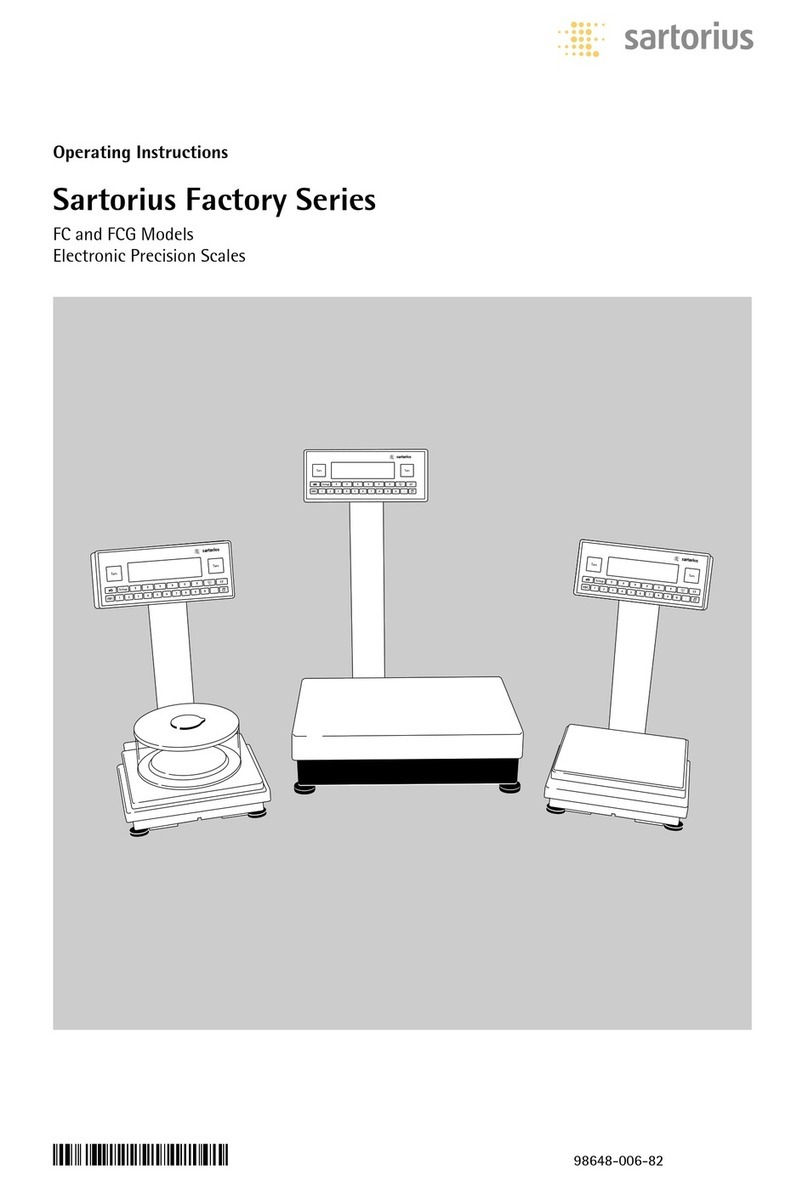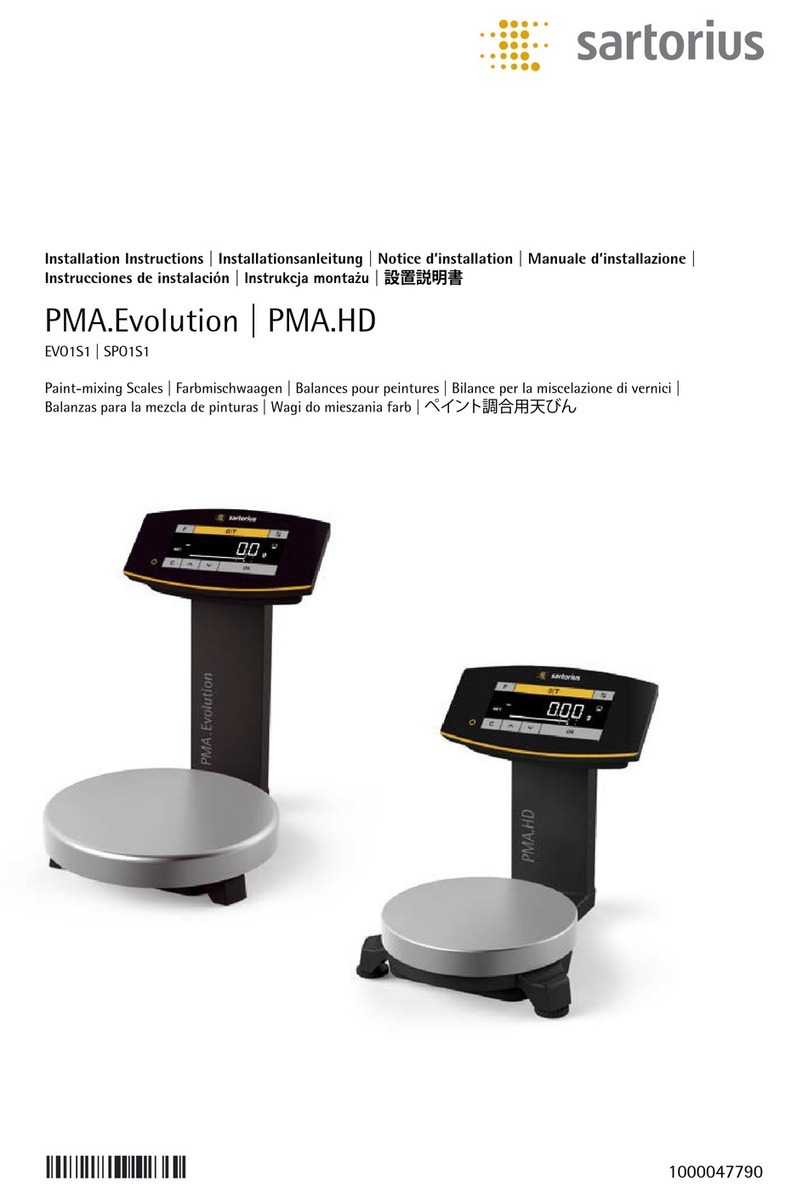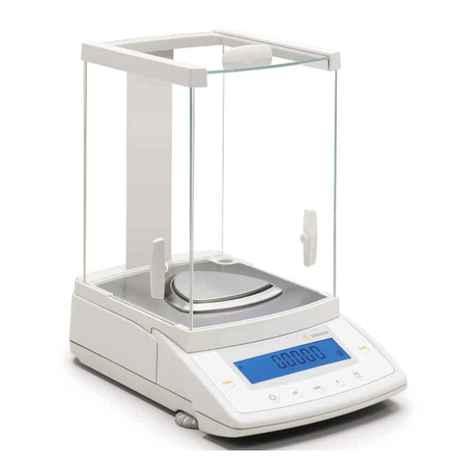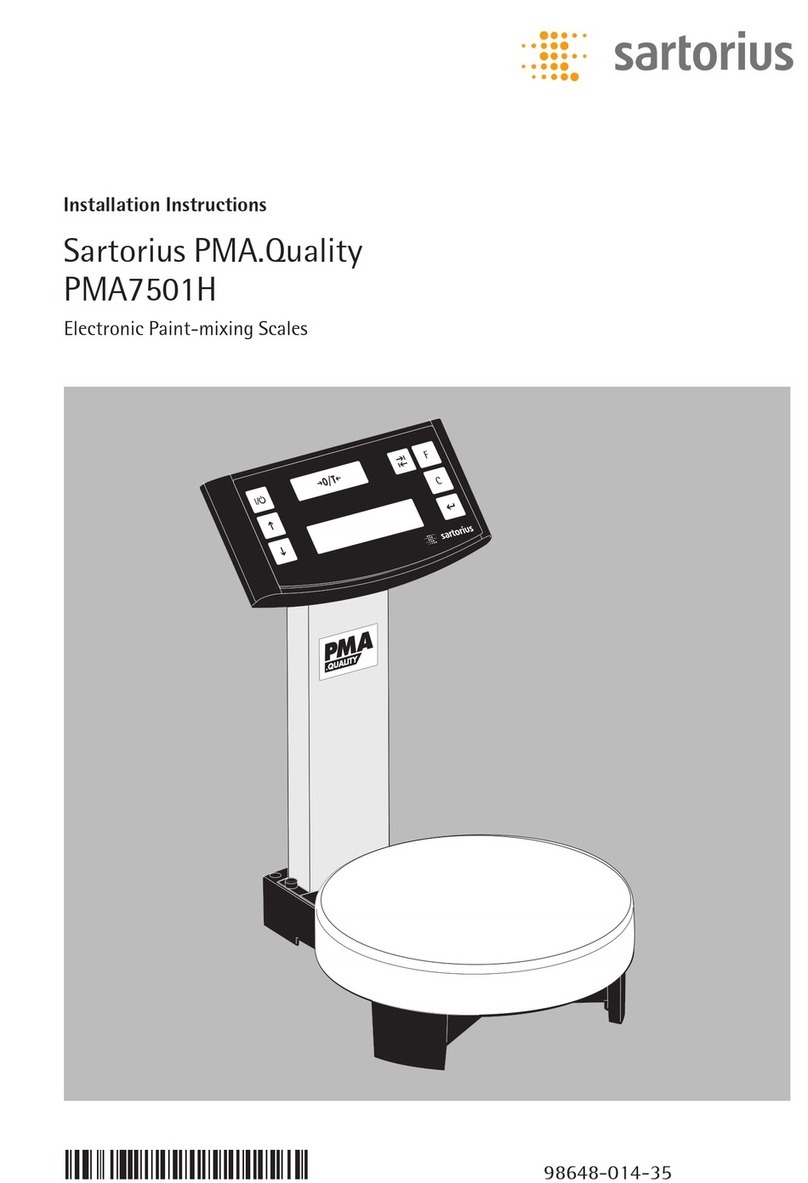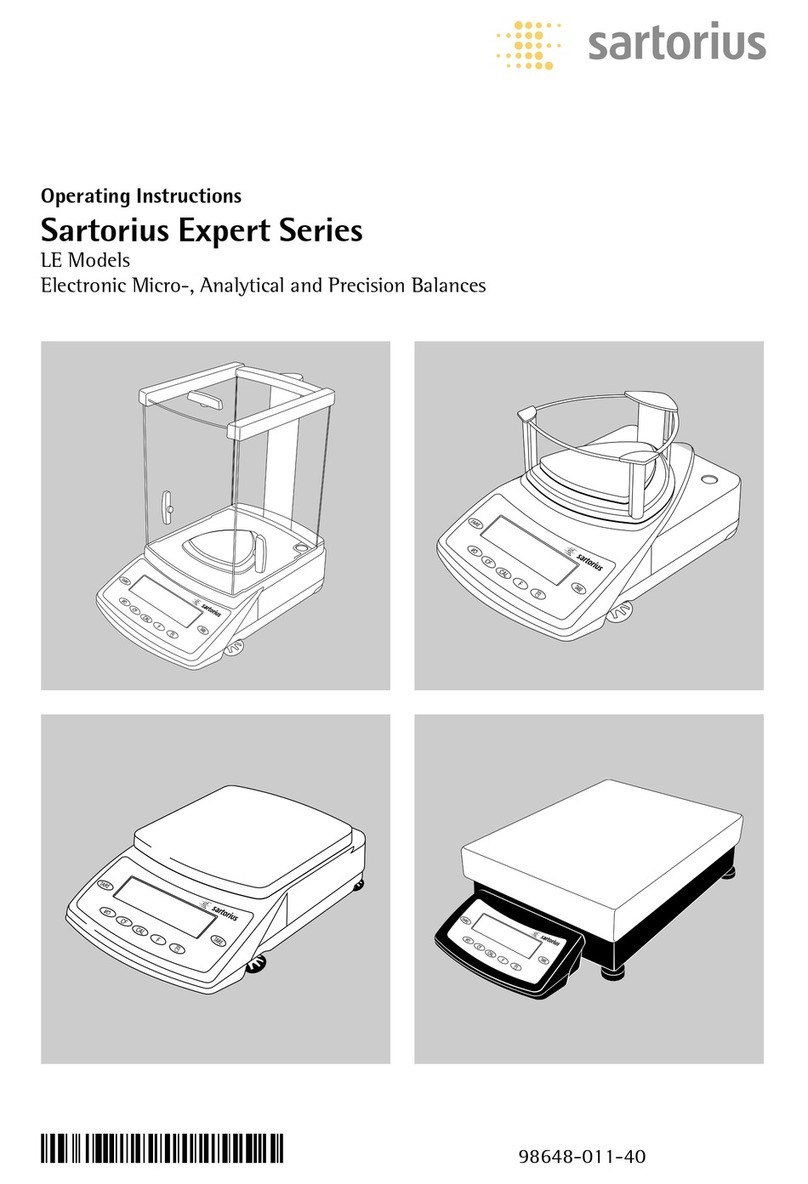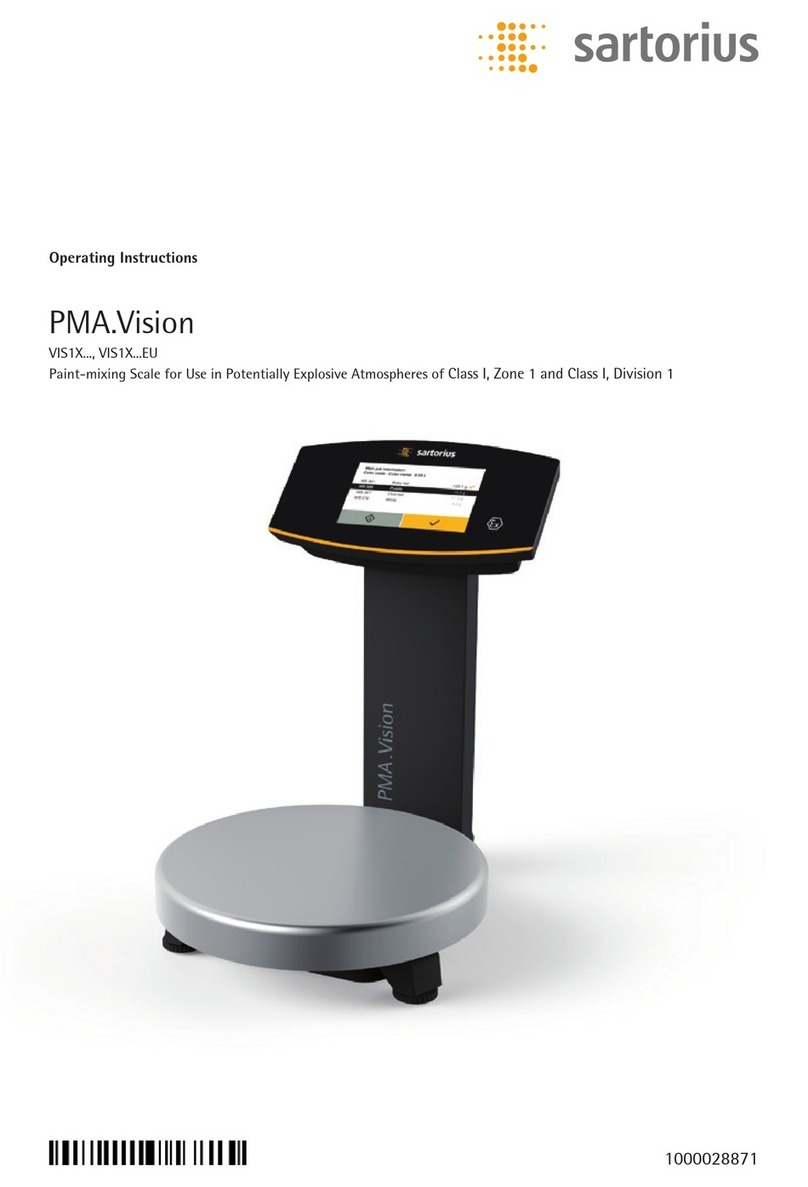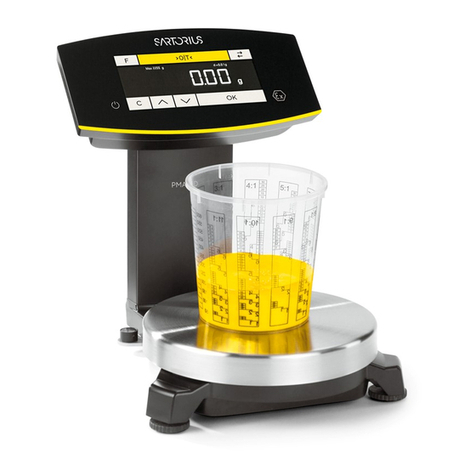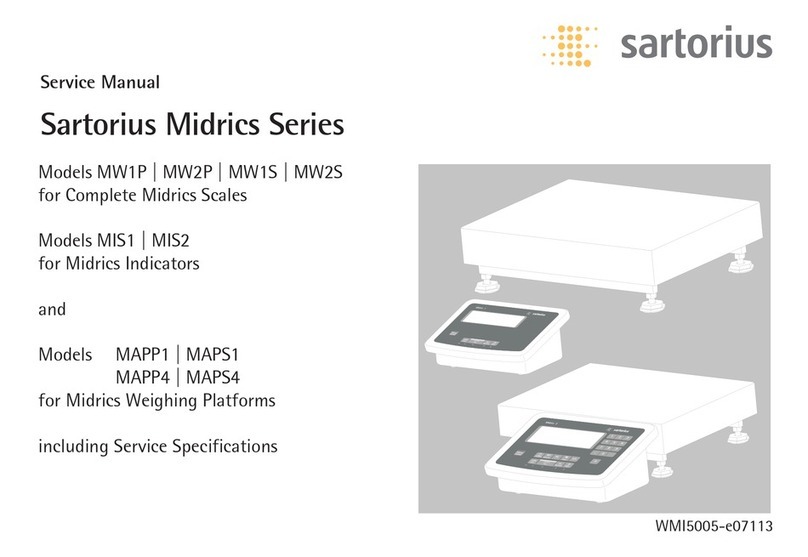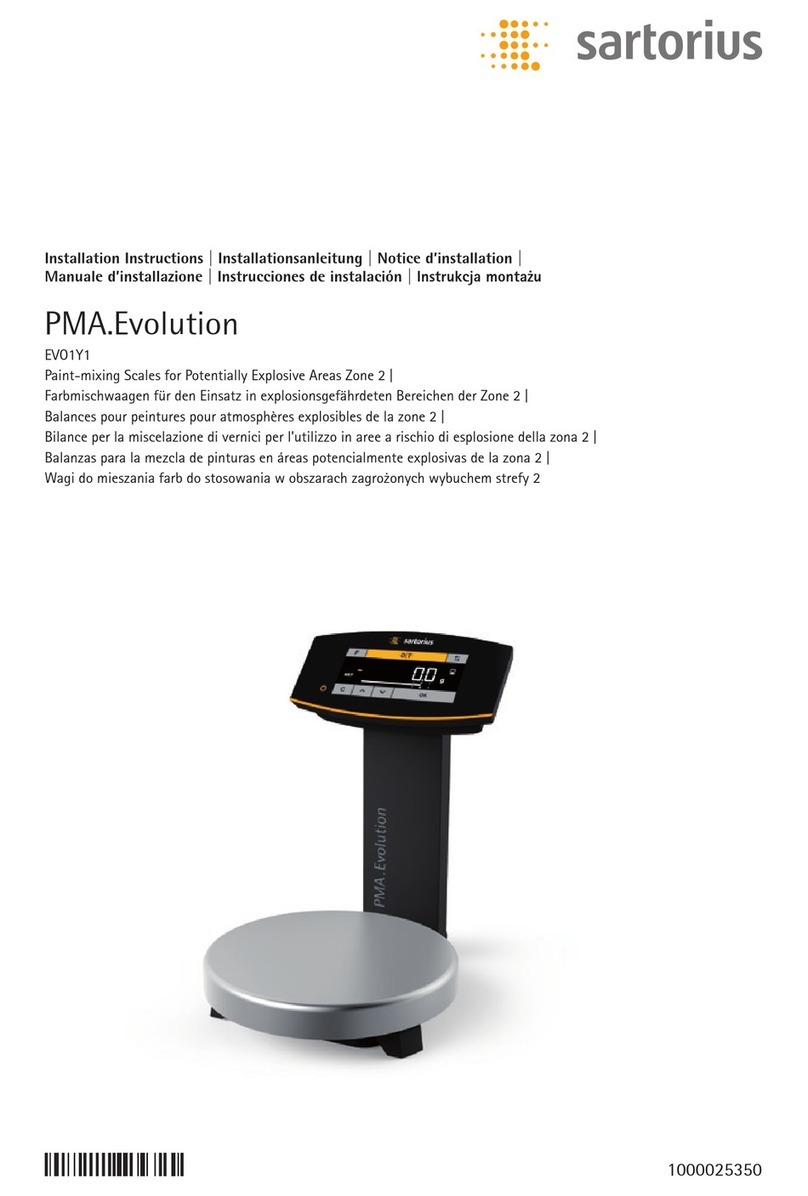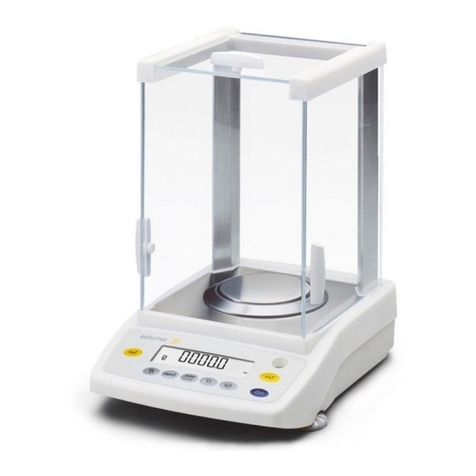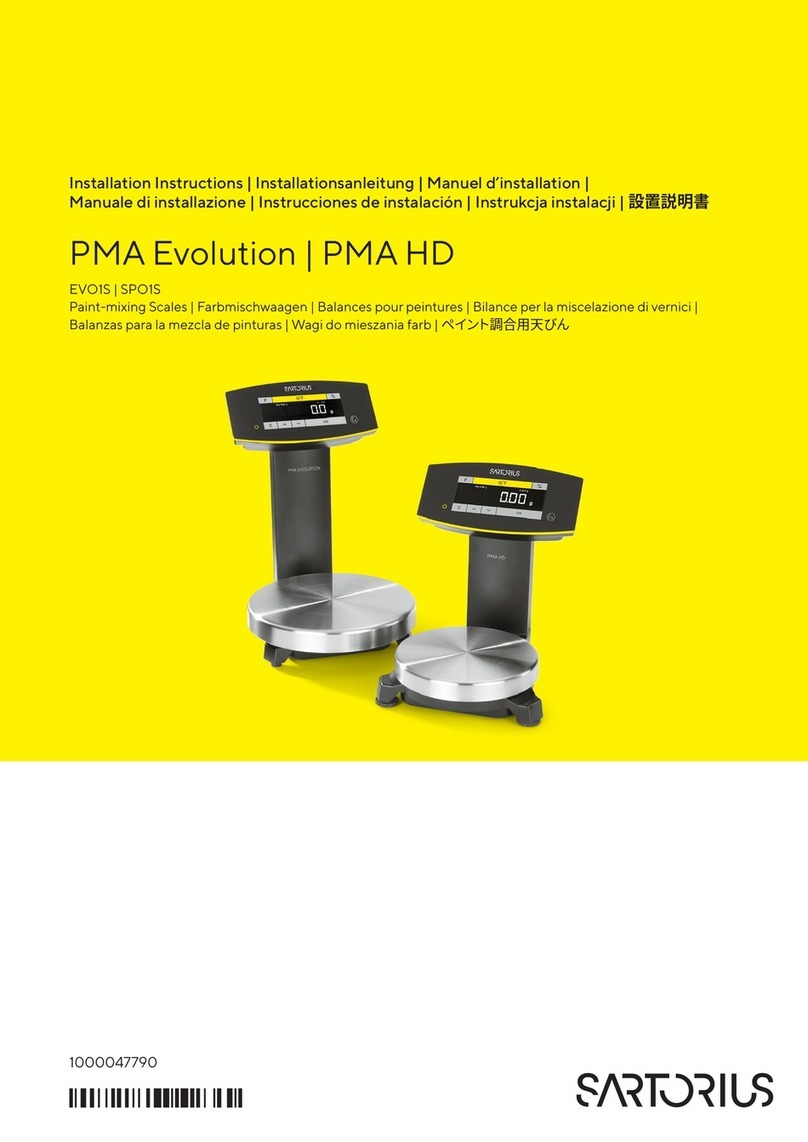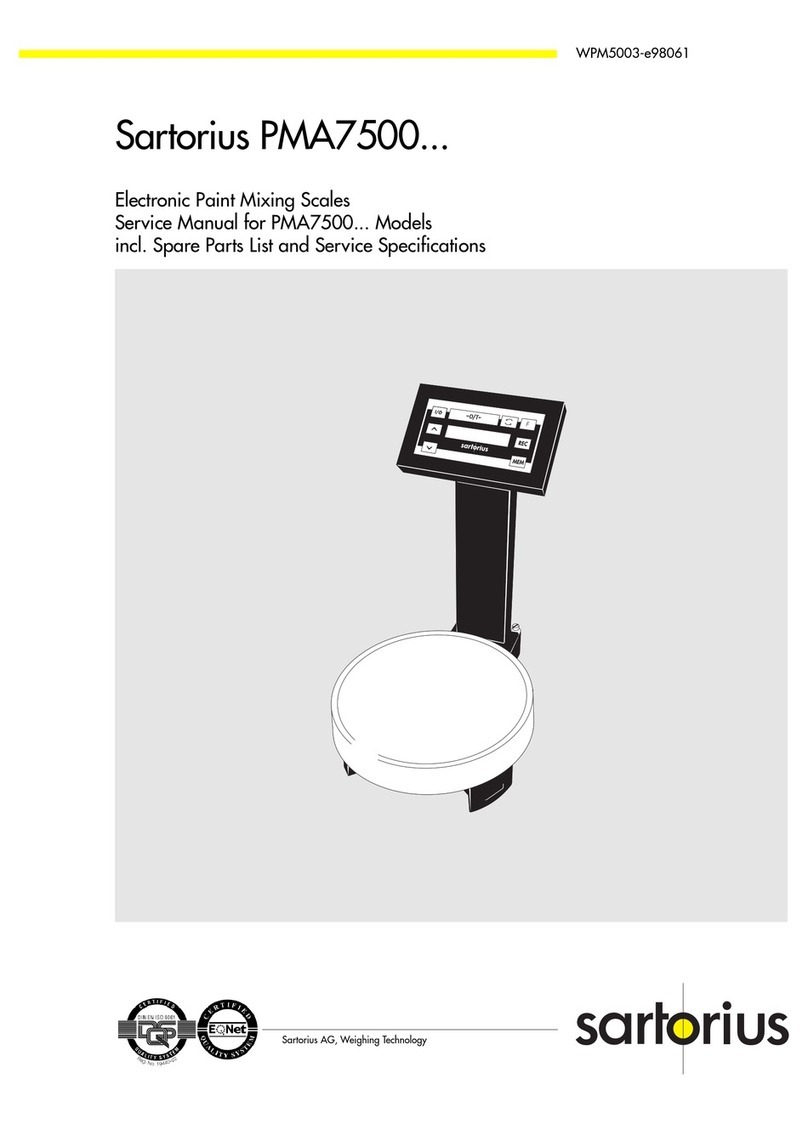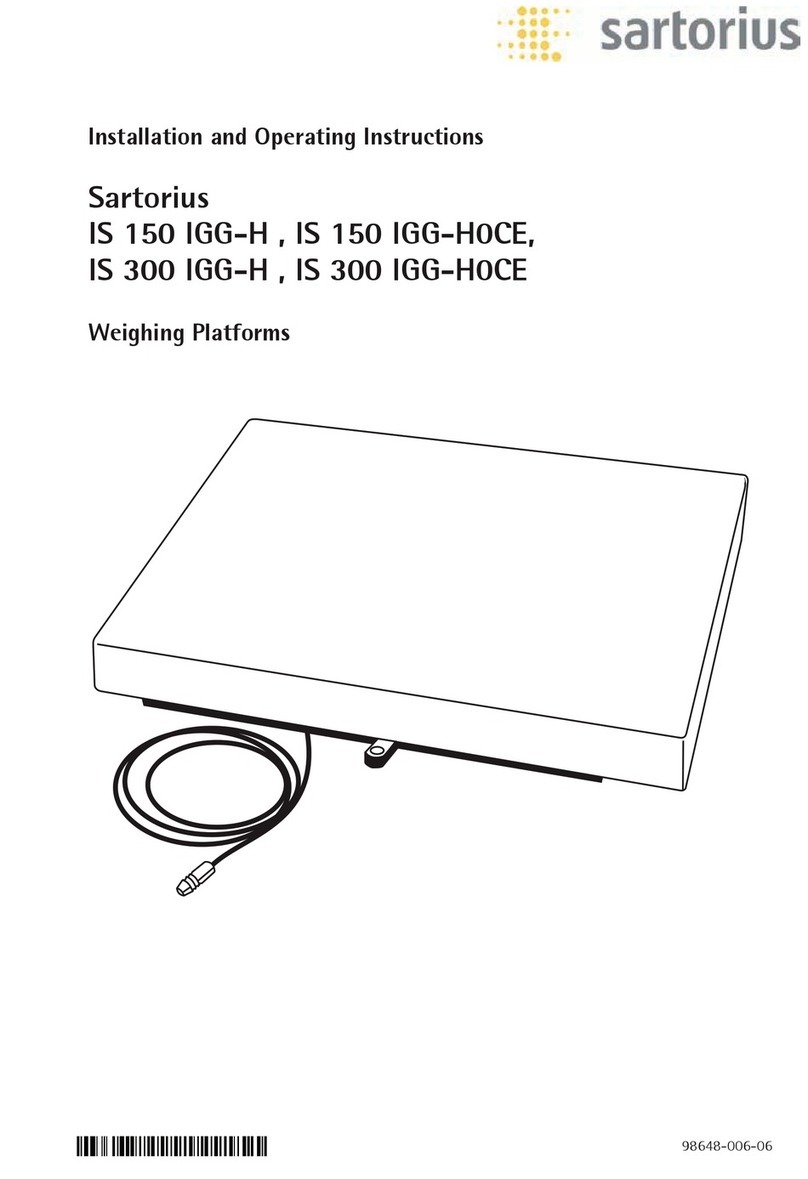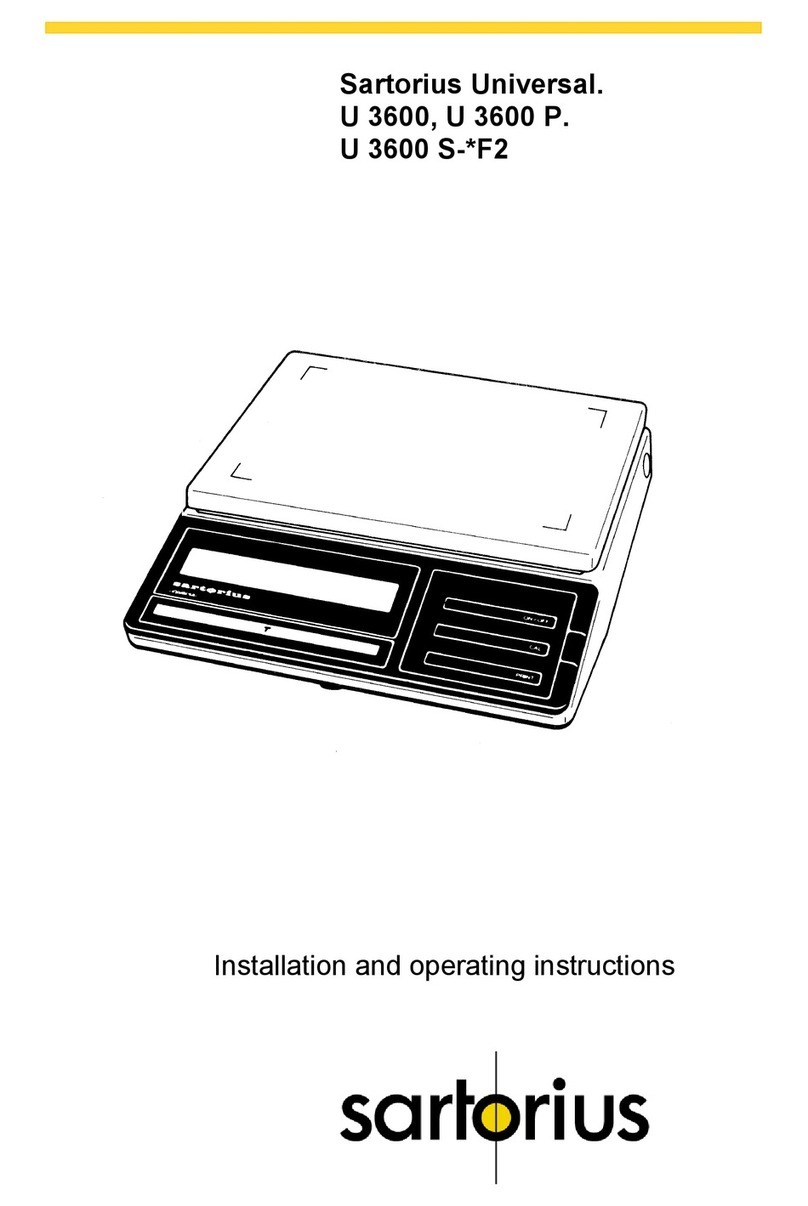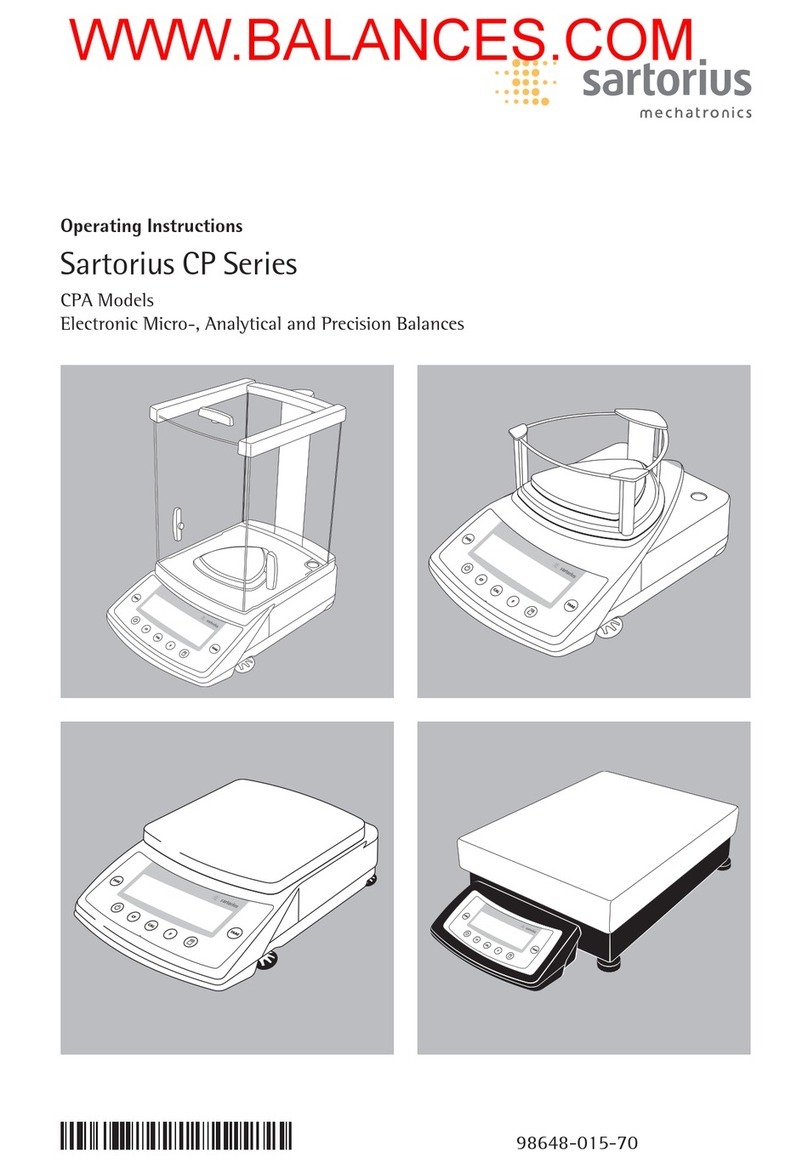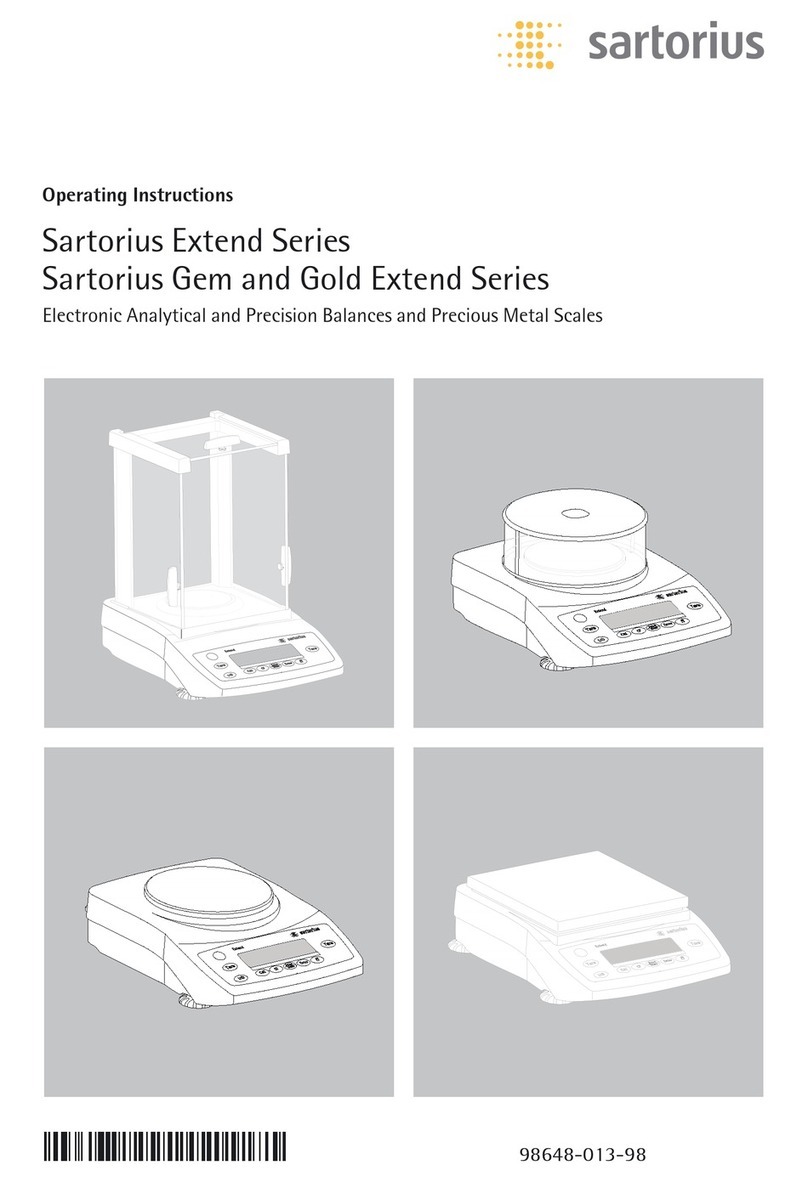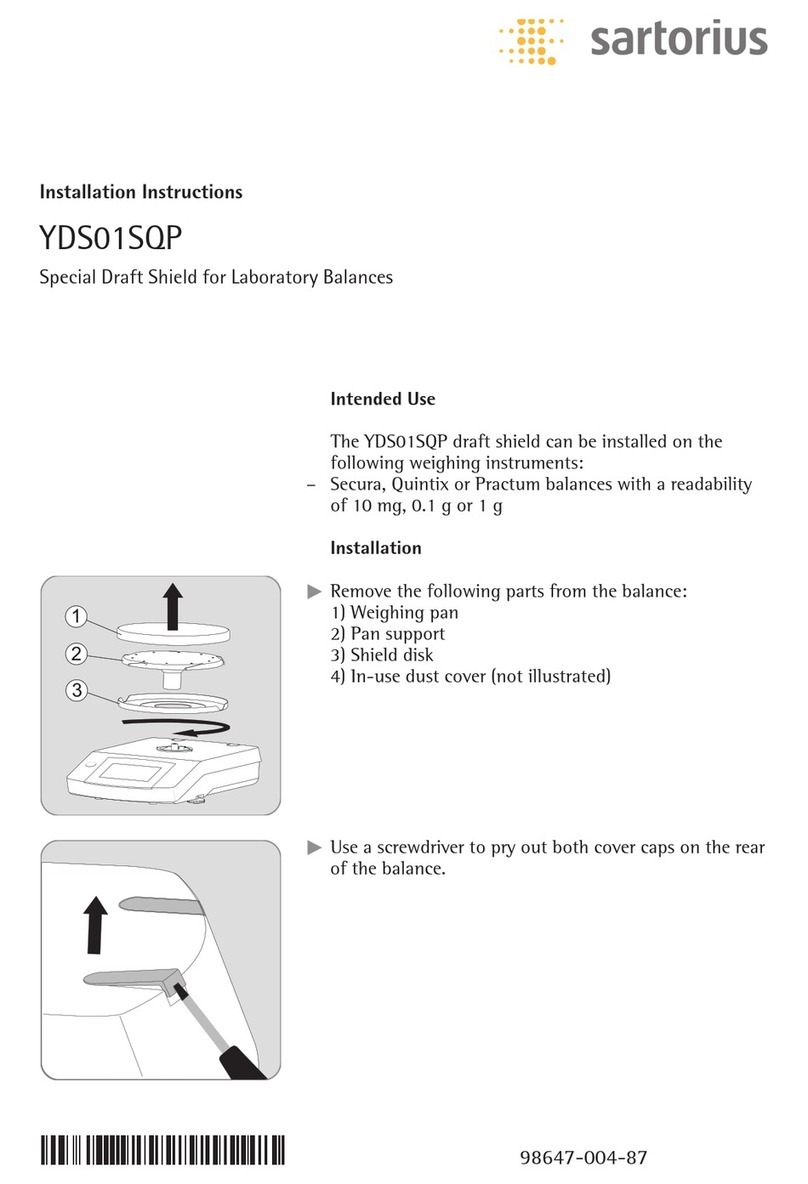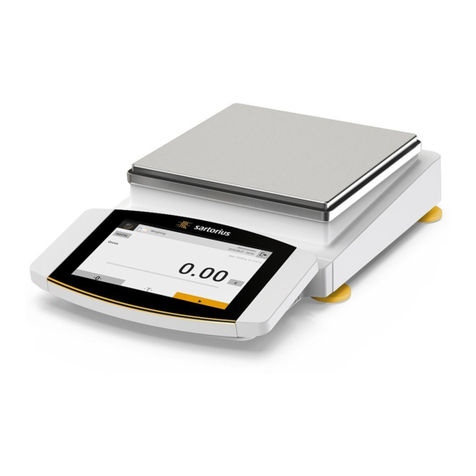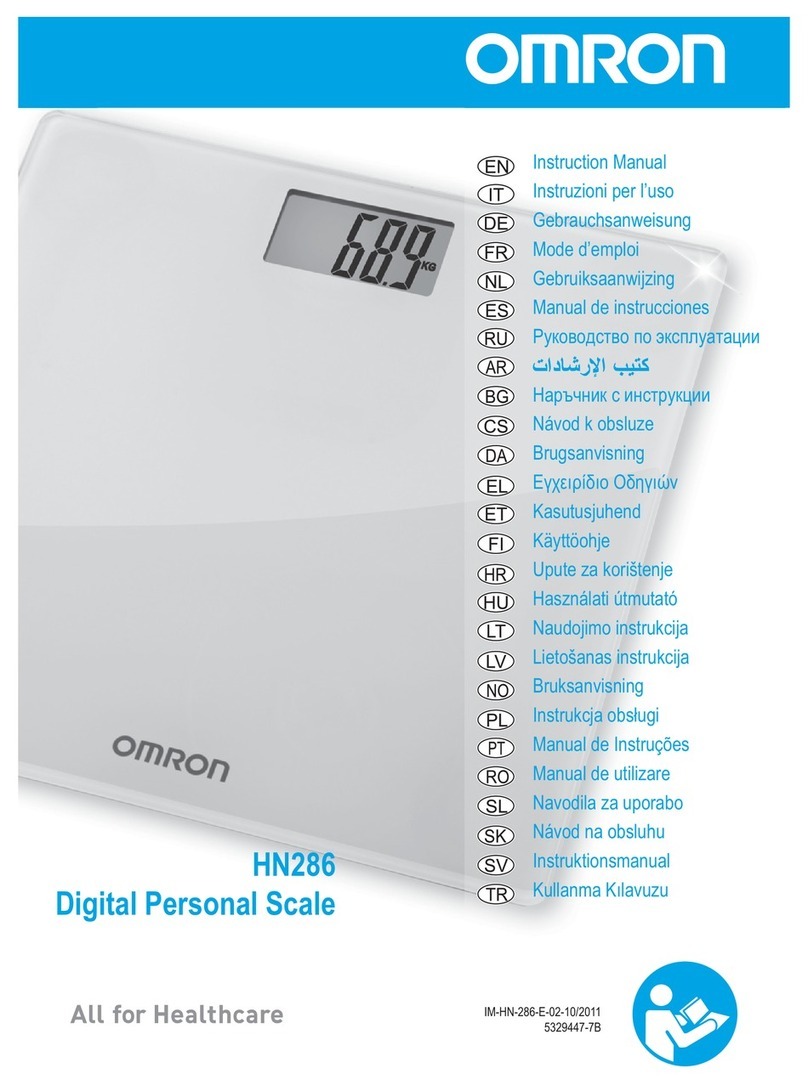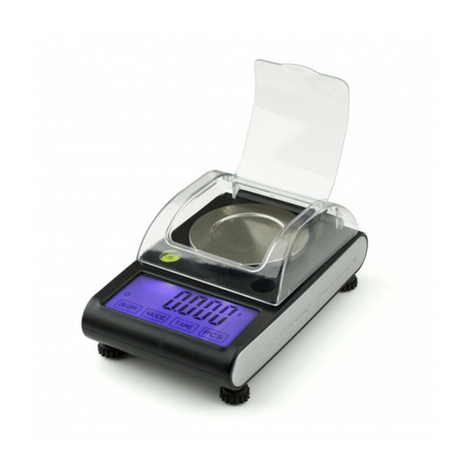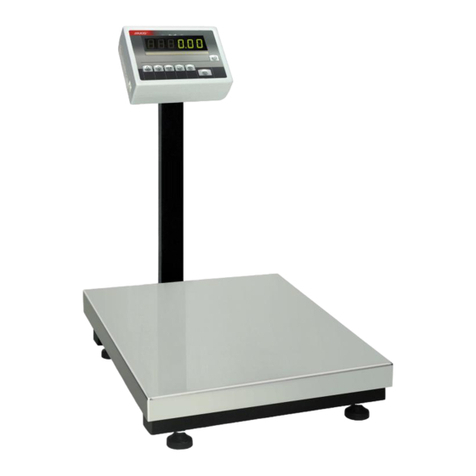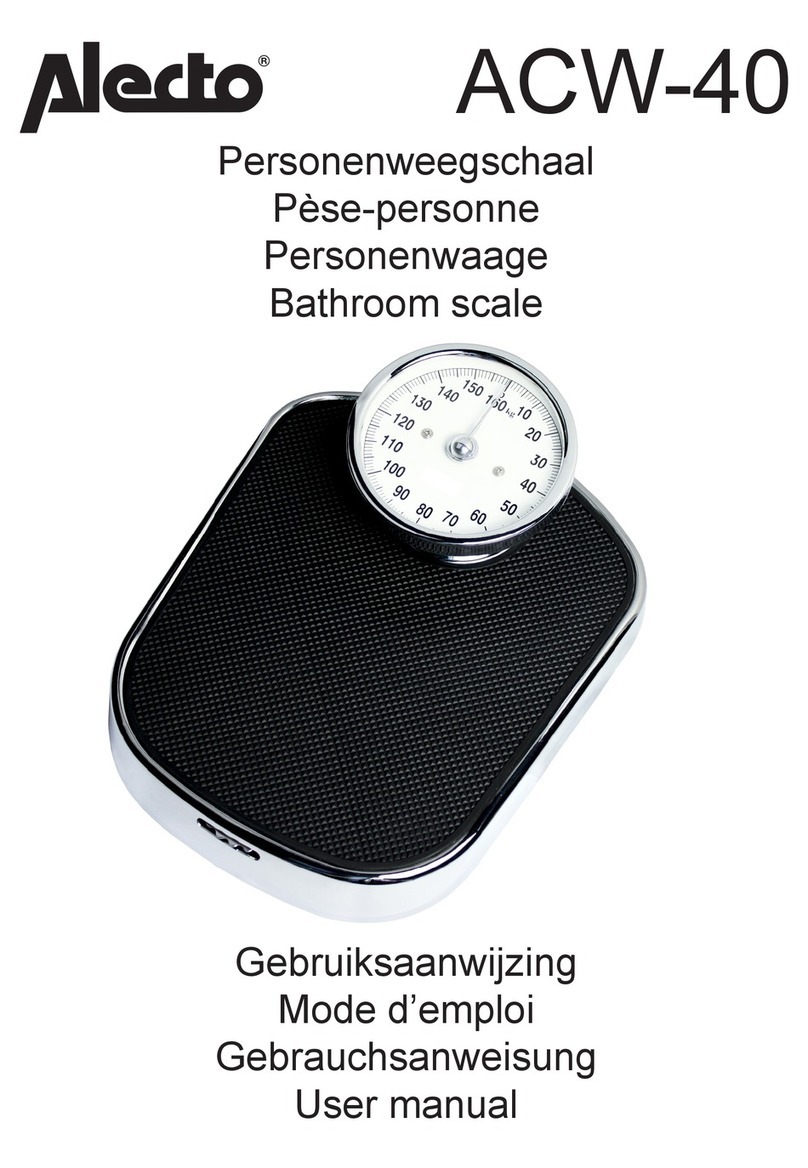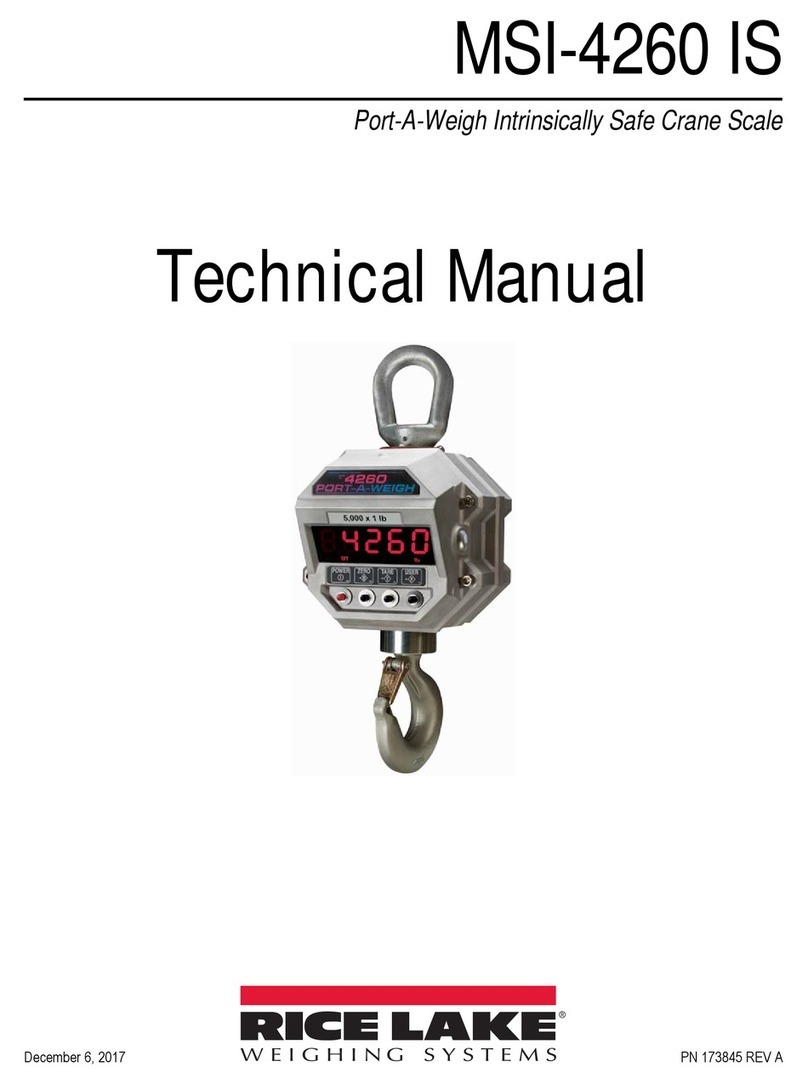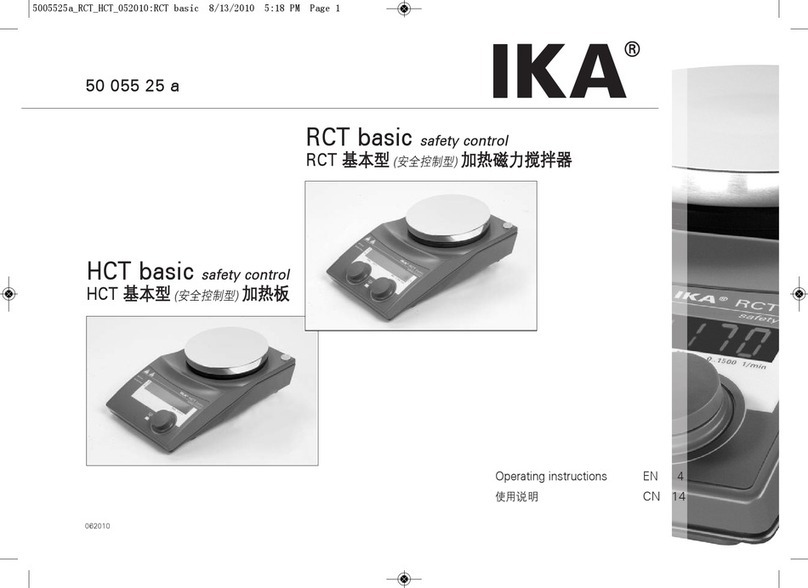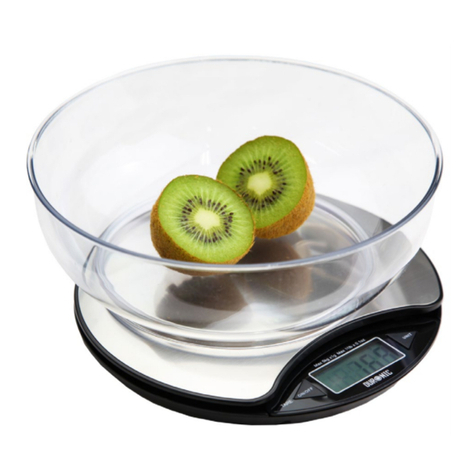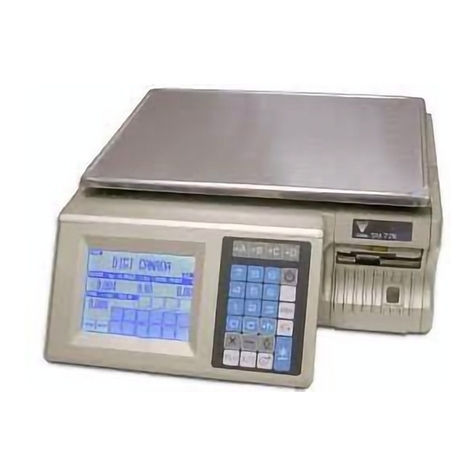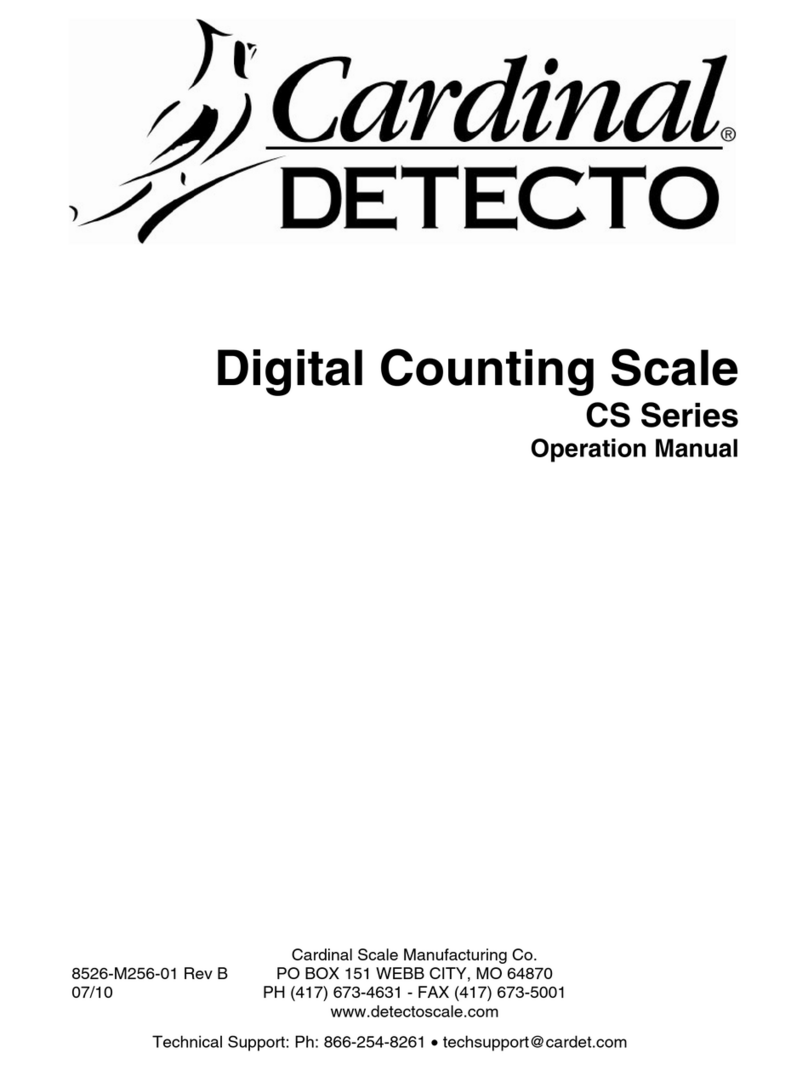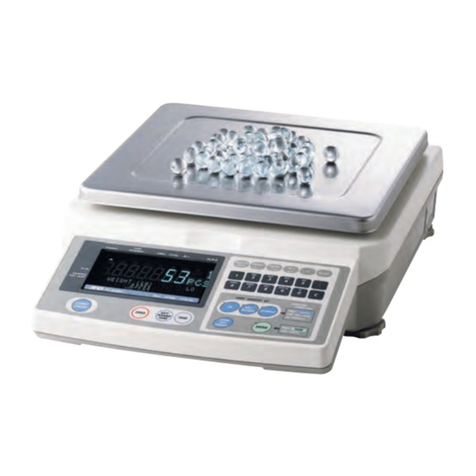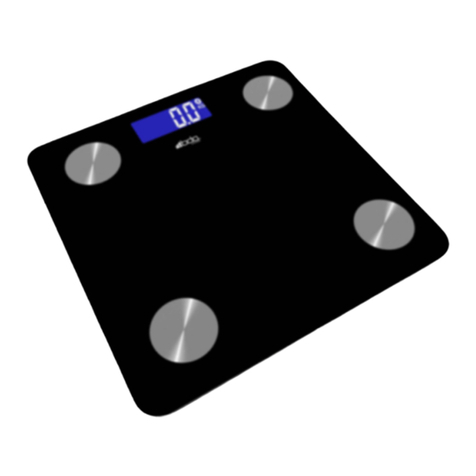6
Installation
The weigh cells are available in various
versions. If you have ordered special
options, the weigh cells are equipped
with the specified features at the factory.
Storage and Shipping Conditions
– Once the equipment has been removed
from the packaging, it may lose accura-
cy if subjected to strong vibration.
Excessively strong vibration may com-
promise the safety of the equipment.
– Do not expose the equipment unneces-
sarily to aggressive chemical vapors or
to extreme temperatures, moisture,
shocks or vibration.
$It is a good idea to save the box and all
parts of the packaging until you have
successfully installed your equipment.
Only the original packaging provides
the best protection for shipment.
$Before packing your equipment, unplug
all connected cables to prevent damage.
$Do not expose the equipment to
gravitational acceleration in excess of
0300 m/s2(unless additional equip-
ment is installed on the load receptor
that enables it to withstand this force).
Incoming Inspection
The customer shall inspect the product
and packaging immediately upon deliv-
ery for proper functioning, complete-
ness, and absence of defects. This is to
be performed in an incoming inspection
within 10 days of delivery of the prod-
uct. The incoming inspection must take
place before the equipment is installed.
Any obvious defects, errors, or incorrect
delivery must be reported in writing.
Defects detected at a later date must be
reported in writing immediately upon
detection.
Be sure to perform the following as part
of the incoming inspection:
– We recommend performing a repeata-
bility test using an auxiliary draft shield
to make sure the weigh cells were not
damaged in transport. You can use the
display and control unit as an aid for
this test.
Installation Instructions
The equipment is designed to provide
reliable results under normal ambient
conditions. If you have any questions
or difficulties when developing your
weighing system, please contact the
specialists at Sartorius. When designing
and setting up your weighing system,
please observe the following so that
you will be able to work with added
speed and accuracy:
– The protective cap is designed to
protect the weigh cell.
Always replace the protective cap/trans-
port locking device before transporting
the weigh cell.
!Following transport, be sure to calibrate
the weigh cell prior to performing any
measurements.
– Avoid exposing the equipment to the
effects of extremely high temperatures;
for example, caused by other electronic
components, heaters or direct sunlight.
– Protect the equipment from drafts that
come from open windows or doors.
– Operate the equipment at a constant
temperature.
– Avoid exposing the equipment to exces-
sive vibrations during weighing; for
example, caused by motors or valves.
– Protect the equipment from aggressive
chemical vapors.
– Do not expose the equipment to
extreme moisture.
– The assembly on the load receptor is
specially designed for pipetting (using
6 ml or 21 ml beakers). Other equip-
ment installed on the load receptor
can interfere with weigh cell functions.
The operator of the equipment accepts
all liability for production release and
the overall specifications of the equip-
ment as connected within the particular
system. The overall specifications
attained by your system may differ from
the specifications listed for the weigh
cell in these instructions.
Conditioning the equipment:
Moisture in the air can condense
on the surface of a cold weighing
instrument or other device whenever
it is moved to a substantially warmer
place. If you transfer the equipment to
warmer area, make sure to condition it
for about 2 hours at room temperature,
leaving it unplugged from AC power.
GPC65-CW:
An equipotential bonding terminal is
provided on the rear of the weighing
cell mounting plate. The screw on this
terminal is designed for wire diameters
of up to 6 mm2(unifilar) or 4 mm2
(stranded wire). Make sure the equipment
is grounded to the machine framework.
Installing the Leveling Feet
§Place the weigh cell on its side.
§Insert and turn the leveling feet to
attach them to the weigh cell.
$Remove the leveling feet before placing
the weigh cell in the optional accessory
case for the YDB01WZA25 pipette cali-
bration set.
Connecting the Weigh Cell to the
Electronics Module
§Position the equipment at the location
where it will be used.
§Plug the connecting cable into the
socket on the electronics module and
the male connector on the weigh cell.
Make sure the components you connect
have identical serial numbers.
